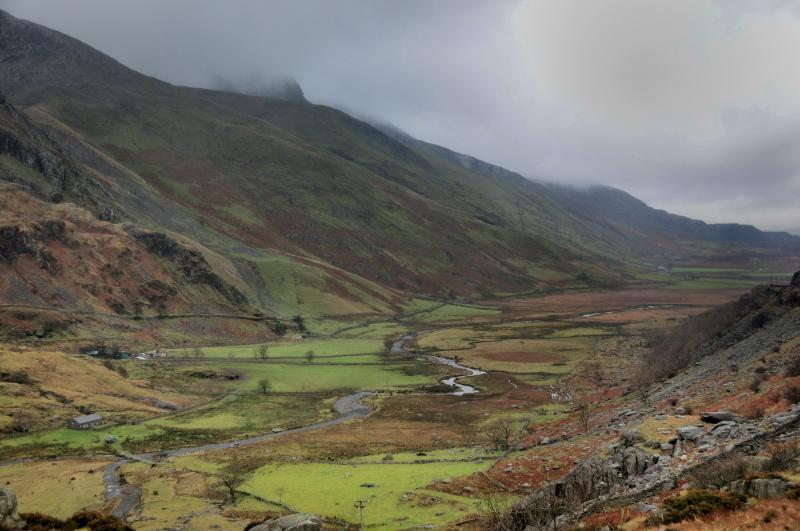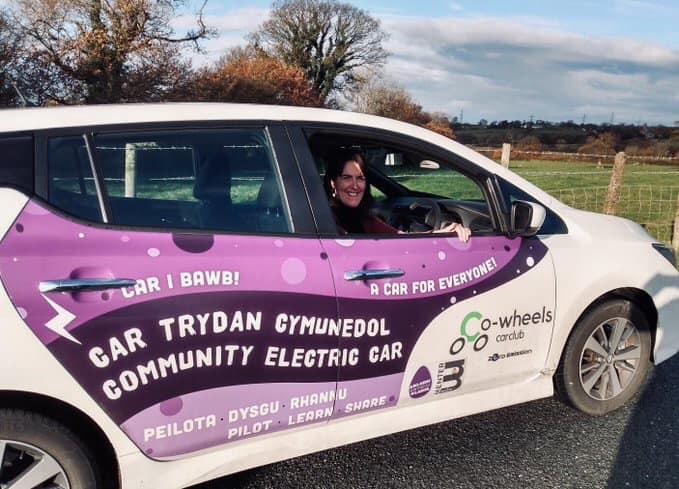Joanna Watson17 Nov 2020
The small town of Bethesda lies at the heart of a former slate mining community in North Wales. Surrounded by a cluster of villages known as Dyffryn Ogwen – Ogwen Valley – it’s an area of wild beauty that’s host to a welcoming community which is also riven by pockets of rural poverty and social isolation.
I moved back to one of the outlying villages in the early 2010s, as my role at Friends of the Earth meant I could effectively work from anywhere – and North Wales was at the top of my list.
Later, when I joined a new team that runs small experiments in social and environmental change with a strong community focus, I often wondered how I might work with my own neighbours. Could I use some of my time, skills and experience to respond to my community’s needs, using an experimental approach that was also aligned with Friends of the Earth’s mission?
The idea: a community-owned electric car powered by local renewable energy
I found the answer to both when my team was considering how we might encourage the growth and take up of renewable energy. One idea was to create a virtuous circle of supply and demand through electric vehicles powered by community-owned energy to maximise the financial and other benefits for a locality.
I knew of and had supported the installation of a community-owned hydro scheme managed by the social enterprise Partneriaeth Ogwen. When I saw they were running an open day about electric vehicles, I put two and two together and made five: perhaps my local area could be the case study for a successful community-owned electric vehicle (EV) powered by the local renewable energy scheme?
Joint working with Partneriaeth Ogwen
It turned out that Meleri Davies, the hugely dynamic and inspiring Chief Officer of Partneriaeth Ogwen had had the same idea. The only problem was neither of us had access to the funds to get a pilot up and running or had thought in detail about how it might work or who it would serve.
As Mel explains “Collaboration and working in partnership is what we do best as an organisation, be that with the local rugby club or with a national organisation like Friends of the Earth. So, when Christian came to our Electric Vehicle & Community Transport event back in October 2018, I instantly knew we had to get our heads together. We shared the same thinking – a commitment to sustainability but also a hunger for some innovation to sort out some key problems from the ground up.”
Mel already had some data from a survey her team had run on transport provision in the area, and I thought I could do some desk research on small-scale community transport options as well as talking to existing providers. Mel and our local Community Transport Association rep made some introductions and I got started.
So, what did we find out?
Through further chats with Mel, research, and conversations with users and providers of community transport options in the area, we came up with some key insights:
- Very short journeys such as from the top of the valley to facilities like shops and the medical centre located at the valley bottom were hard and/or expensive to make.
- There was unlikely to be enough demand from community transport users alone.
- A wheel-chair accessible vehicle was going to be essential.
- Partneriaeth Ogwen had its own transport needs, like ferrying volunteers and tools.
- People use community transport for all kinds of reasons – for day trips, getting to work, accessing medical care, visiting neighbours, reducing isolation by chatting to the driver etc.
- The vehicle itself could act as a way of cross-selling other local services and businesses, through leaflets and other materials – a kind of mini-mobile library.
- There were complementary gaps and overlaps between Bethesda (an area where shops and businesses often struggle, but there’s plenty of parking) and the local beauty spots of Nant Ffrancon and Llyn Ogwen (high levels of tourists and very limited parking).
Different uses at different times
Using these insights, I built a blended usage model where the vehicle could be available to different users at different times – for example, for Partneriaeth Ogwen’s Sustainability Officer for some days of the week; for a volunteer driver who could offer community transport provision during the other weekdays; and for private hire at weekends or out of hours.
From small beginnings
Our ambition grew to include future consideration of an EV-based park-and-ride scheme between Bethesda and local tourist attractions – perhaps coupled with incentives to stay and shop in the town, such as EV charging in the local car parks.
This kickstarted Mel into thinking about a much bigger strategy centred around increasing sustainability, building economic recovery and tackling social isolation, which I helped crystallise with a presentation to the first steering group of Dyffryn Gwyrdd (Green Valley).
The strategy covered areas such as food, fuel and transport poverty, green apprenticeships, community EV, community orchards, waste reduction, biodiversity, tree planting and community growing. It was ambitious and transformative in scope but would need a considerable sum to fund it.
As Mel says “I think what Christian brought to the table was the credibility of a national organisation and a can-do attitude in terms of environmental innovation”.
We got our car….
Our brilliant Community Transport Association rep, Michelle Clarke, helped us identify a few possible sources of funding, including a truly pioneering initiative from Arloesi Gwynedd Wledig where we would effectively be loaned an EV for a year. It was a long way short of what we wanted, but I encouraged Mel to go for it, as whatever happened we’d learn lessons we might use for bigger bids.
We won the electric car bid. Within 3 months of launch, the car – aptly named Carwen - had already done 6,000 miles on behalf of the community.
… and started to make the vision a reality
A period of illness and recovery prevented me from staying as close as I’d like, but Partneriaeth Ogwen kept going from strength to strength, including winning nearly £500,000 lottery funding to make Dyffryn Gwyrdd a reality. They’re helping local producers reach customers through a delivery scheme powered with local renewable energy and reducing supermarket food waste by distributing it for free. Also in the works are plans for a community orchard, allotments and other tree planting.
Elsewhere, they’re supporting the establishment of a food bank in response to COVID-19 and embedding sustainability and waste reduction at the heart of this work. And currently they’re working on sustainable tourism initiatives, including a training centre and an electric shuttle bus service.
Empowering a local response to climate change
I’ve been really inspired by how a small project rooted in ideas of sustainability and community connection can be the catalyst for transformation. As Mel says:
“Environmental activism needs to become the norm and the only way for that to happen is to foster it from the ground up. Community-led environmental projects inspire and change behaviours, but they also raise confidence and empower communities, and I’ve seen our community become more confident in developing environmental projects. On a community level, I’m confident that we’re slowly but surely creating a new collective and local voice in the fight against climate change”.
Are you considering a similar initiative or approach in your community? Or perhaps you have some insights to share? If so, please get in touch.



